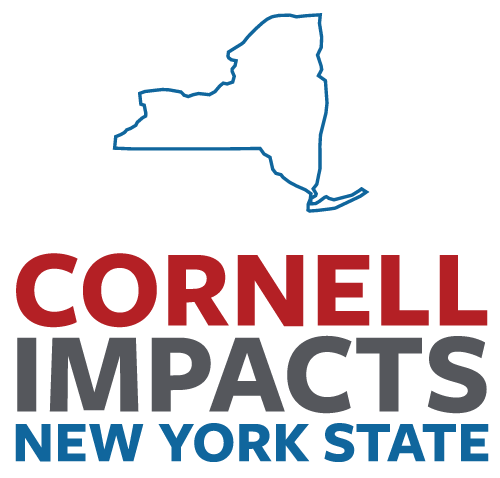Deer hunters were more likely to be swayed by social media messages about the potential risks of chronic wasting disease if they came from a source they believed aligned with their own views and values, according to a new study.
Chronic wasting disease - a neurological disease that fatally infects white-tailed deer, elk and moose - has been eradicated from New York state, but reintroduction from other affected states remains a constant threat.
According to an earlier survey, many New York hunters lack awareness or don't perceive chronic wasting disease (CWD) as an important issue, which has led them to disregard recommended practices by the New York State Department of Environmental Conservation to prevent CWD from being reintroduced into New York state.
A study, "Social-psychological Factors Influencing Risk Perceptions of Chronic Wasting Disease on Social Media," published in December 2023 in the journal Human Dimensions of Wildlife, describes the results from an experimental survey aimed at identifying social-psychological factors that affect how well social media messages are able to increase perceptions of CWD risks in New York.
The perceived credibility of a source of information, a hunter's environmental values, the actions of other hunters, and knowledge about CWD were all factors that influenced whether a social media message was more or less effective at influencing hunters.
"A lot of risk communication about chronic wasting disease that is done takes place when people are faced with an existing threat," said Alisius Leong, a doctoral student in the field of communications and the paper's first author. "Our study is novel in the sense that we seek to engage in preemptive measures to prevent a potential threat," she said.
CWD, currently detected in 31 states, is spread by prions, a type of protein that leads to neurological disorders, weight-loss, abnormal behavior, lack of fear and death in deer. While CWD has never been recorded in humans, the Centers for Disease Control (CDC) recommends people avoid eating CWD-positive deer. Animal studies suggest CWD poses a risk to some nonhuman primates, like monkeys.
"The bigger issue, if CWD was shown to affect people, is that people may stop hunting and then we wouldn't have any mechanism to manage wild deer populations, causing a multitude of other problems," said study co-author Krysten Schuler, director of the Wildlife Health Lab in the College of Veterinary Medicine.
The New York State Department of Environmental Conservation (DEC) recommends that hunters who hunt out of state, such as in Pennsylvania where CWD has been reported, not bring whole carcasses into New York. Meat, antlers, hide and cleaned skulls are permitted. Most of the prions are in the brain and spinal cord, plus some tissues like spleen. When improperly disposed, carcasses pollute the environment, where prions can persist in soils for years. The DEC recommends that hunters dispose of carcasses in landfills.
In the study, 2760 participants were exposed to one of six experimental mock Facebook messages or the control, where they did not view any message. To test whether participants perceived certain sources of information as more credible than others, messages were addressed from one of three sources - the NYS DEC, the Cornell Wildlife Health Lab and the National Deer Association. Messages from each source used either more forceful or less forceful language.
The researchers found that participants' trust of sources depended on whether they believed the source shared their values, attitudes and views.
Though differences were small, Facebook posts from the Cornell Wildlife Health Lab were more effective than messages from the other sources. "Among those who initially did not perceive CWD to be a threat, more people more strongly perceived CWD to be a risk after reading a post from Cornell than from the NYS DEC or the National Deer Association," Leong said.
Messages more effectively changed behaviors in hunters who were more concerned about the environment, but did not initially think their risky actions would contribute to CWD, or that CWD posed a threat to New York state.
Perceptions of the prevalence of other hunters engaging in dangerous behaviors, such as bringing a whole carcass in from another state, also had an influence. "Our message was more effective in influencing hunters who were less aware of other people violating DEC's recommended actions but who perceived CWD to pose a threat to New York state," Leong said.
Hunters were harder to influence if they considered themselves knowledgeable about CWD and did not consider behaviors such as bringing a carcass from out of state into New York to be risky.
The study is part of a larger effort at the Cornell Center for Conservation Social Sciences (CCSS) to develop an effective digital media messaging campaign to reduce the risks of chronic wasting disease in New York state.
Co-authors include Bruce Lauber, director of CCSS, William Siemer, a research associate in CCSS, Richard Stedman, professor and chair, all in the Department of Natural Resources and the Environment (CALS); Katherine McComas, professor in the Department of Communication (CALS); and Jeremy Hurst, game management section head for NYS DEC.
The study was funded by a New York Federal Aid in Wildlife Restoration Grant and the United States Department of Agriculture Animal and Plant Health Inspection Service.







